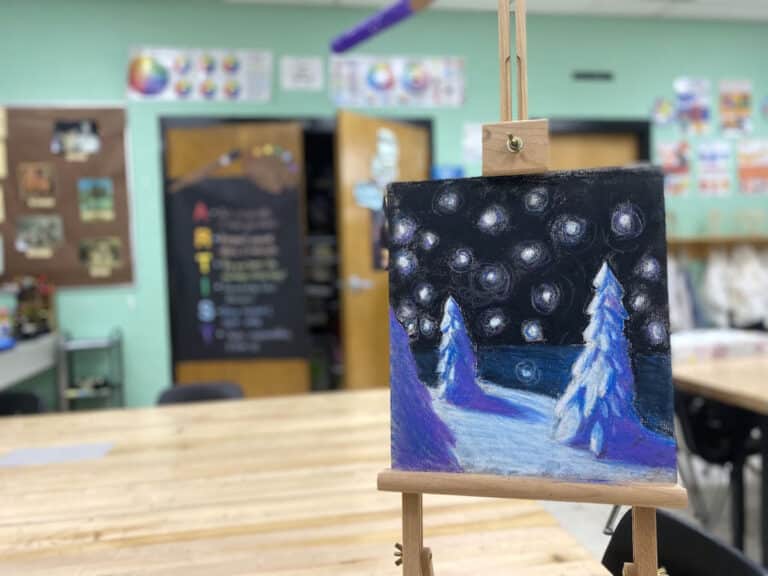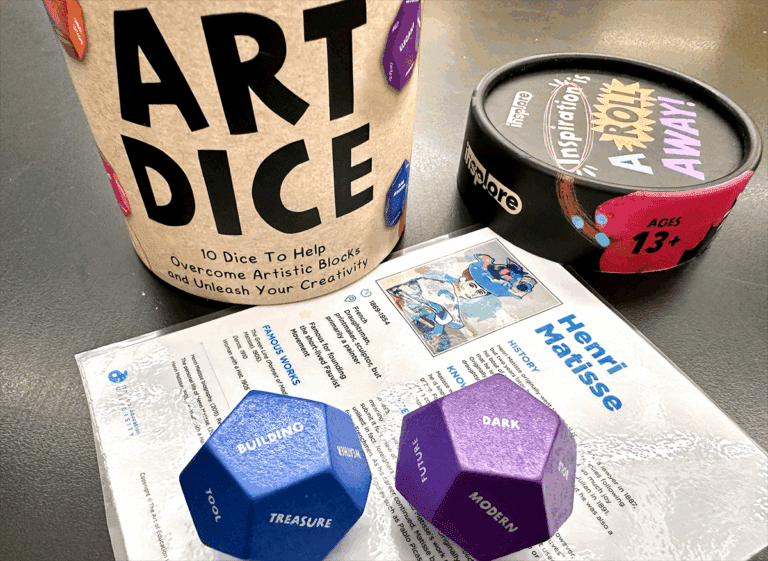Over a decade ago, researchers with Harvard’s Project Zero identified The Studio Habits of Mind. Through research, Lois Hetland and her team classified and named eight Studio Habits which include: Develop Craft, Engage & Persist, Envision, Express, Observe, Reflect, Stretch & Explore and Understand Art Worlds. Since then, the eight Habits have been a continuous force in reshaping how progressive art education is organized and administered. As you can see, these are not novel ideas in art ed. They are, in fact, the basis of best practices in the art room. When you introduce the Habits in your art room, students become more mindful of their practice.
Incorporate the studio habits into your curriculum.

There are many authentic ways to use The Studio Habits of Mind regardless of your students’ ages or artistic levels. No matter where you are on the Choice Spectrum, the Studio Habits, as well as the rest of the Studio Thinking framework, can be incorporated into your curriculum.
Recently, I had the opportunity to reach out Paige Byrne, an elementary art educator from Washington D.C., for some advice on how she incorporates the Studio Habits in her art room. Paige’s advice centers on two big concepts that highlight the benefits of using the Studio Habits with your students.
Here are two reasons you should be using the Studio Habits in your art room.
1. The Studio Habits can bring teaching methodologies together.
Recently, Paige did some deep thinking about her personal teaching philosophy. Namely, she wanted to find a way to fuse Reggio methods, Olivia Gude’s teachings, choice-based centers, and contemporary art seamlessly together for her students. The Studio Habits of Mind came to her rescue. She explained, “Students have so much more knowledge, motivation, and interest in performing what we hope they can achieve. Many times, they surpass our expectations. The Studio Habits help me navigate the right support for my students in their art explorations.” For Paige, not only do the Habits allow her to organize her curriculum and pedagogy with choice-based methods but they also effortlessly connect different teaching methods.
2. The Studio Habits are universal.
Many times, educational frameworks or curriculum guides are made to be utilized within particular grade levels or experience levels. With the Studio Habits, that is not the case. Paige says, “Each of the habits is rich across all grade levels and art centers. For example, I have a first grader engage & persist with map-making regardless if I’m demonstrating something many of his classmates choose to try. I may also have a fourth grader developing craft with comic drawing and a fifth grader expressing her love of figure sculpture.”
Some educators might think of the concepts within the Studio Habits as “hidden curriculum.” It’s more difficult to measure a skill like Stretch and Explore than it is to measure a more “solid” concept like color theory. However, the Habits allow art teachers to emphasize modes of thinking that are crucial to their students’ cognitive development. The skills highlighted in the Habits are those that transfer easily to situations outside of the art room walls as they are adaptable to almost any learning situation.

Introduce the Studio Habits to your students.
As a middle school art teacher myself, I have been introducing the Habits, a few at a time, to my 7th graders this fall. Because the Habits are non-hierarchal, there is a lot of flexibility with how you introduce them. In a few short weeks, my students will recognize what the Habits are and how their own work practices relate to each.
I hope the Habits will allow me to approach my curriculum delivery from a different angle. I also hope my students will begin to see that art class is more than just learning about media and techniques, but is also about learning how and why artists work the way they do.
Check out these printable classroom posters that you can use to introduce your students to the Studio Habits and display them in your art room.
Download Posters
How do you incorporate the Studio Habits of Mind in your art room?
What benefits do you see in the introduction or inclusion of the Studio Habits into your curriculum?
Magazine articles and podcasts are opinions of professional education contributors and do not necessarily represent the position of the Art of Education University (AOEU) or its academic offerings. Contributors use terms in the way they are most often talked about in the scope of their educational experiences.







